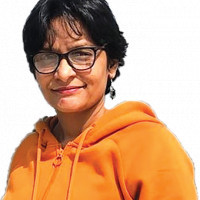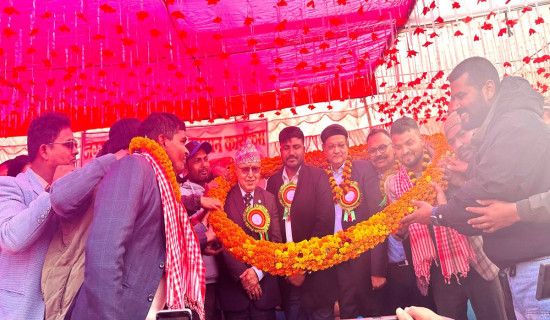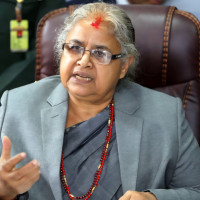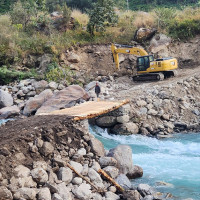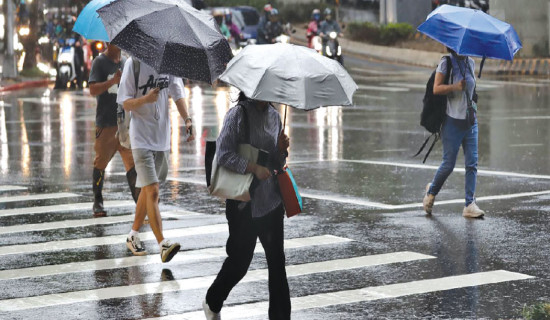- Thursday, 25 December 2025
Cholung Park rises from a sacred forest
Terhathum, Nov. 15: When Arjun Babu Mabuhang was first elected as Mayor of Laligurans Municipality in 2017, one of his earliest actions surprised many people. He began digging a large hole in a quiet forested area to place a stone for what would later become Cholung Park.
Locals, uncertain of his intentions, even joked that he was digging a pit for his own cremation.
“When I became mayor, the municipality had a budget of only Rs. 80 million. After paying staff salaries, I had just Rs. 30 million left for development work. I had to think carefully about how to use it,” he recalled.
“For most people, tourism simply means snow-capped mountains or beaches, but I wanted to create something different, something rooted in local cultural identity,” he said.
The site he chose was once considered a place of sorrow because it was where families carried the bodies of infants who died in the hospital and many people avoided going there alone. Even his elders had warned him not to visit the area or touch the stones scattered across it.
But instead, he became increasingly curious. He wanted to understand the meaning of those stones and their deep connection with Mundhum, the spiritual knowledge of the Yakthung Limbu people.
“I first wanted to understand the stone. I gathered all the information I could, searched online and travelled to many places to learn about it. I discovered that the stone represents life, ancestry, spirituality, law, territory and identity. It is not just a physical object, but a symbol deeply connected to Mundhum, the spiritual philosophy of the Yakthung Limbu,” Mabuhang said.
“So, I wanted to create a park based on this knowledge. If I had waited for a larger budget and tried to begin everything at once, there would have been disagreements and conflict. People did not want money to be spent on a place they had always feared. So, I used a different approach. First, I quietly placed a single stone,” he said.
“Then, step by step, I built stairs, added boundary walls and later installed a larger stone statue further down the slope. I also built three traditional-style houses, one of which was supported by an outside contributor. Inside them, I began displaying ancient items belonging to the Yakthung Limbu community, including old coins once used in Nepal,” he said.
Birth of Cholung Park
The park was officially established in 2019, taking its name from this culturally significant concept.
According to him, before it became Cholung Park, the place had no formal name. The word Cholung comes from the Limbu terms Cho (from Chomen, meaning “to raise one’s head”) and Lung (“stone”), together meaning “sacred stone.”
“Not only stones. Here we have various species of plants, 28 species of rhododendron, out of the 32 species found in Nepal. I collected most of the plants from areas more than 42 metres higher up and planted them in the park, and they are growing well,” he said.
At the moment, the simal flowers are in bloom. Soon the rhododendrons will blossom, and other seasonal flowers will follow throughout the year. Anyone interested in botanical research can also come here to study the plants.
Inside the museum, he has also displayed historical items from ancient times, ranging from objects used during the barter system to stone artworks, reflecting the early connections between Limbuwan and the Licchavi kingdom. The museum also displays iron, copper and silver coins of the Licchavi, Malla and Shah periods.
Since he was elected, he has worked to develop Cholung Park not just as a cultural site but also as a space promoting climate awareness. His goal is also to encourage individuals, community groups and all levels of government to take active roles in reducing the impacts of climate change.
Cholung Park is deeply rooted in Mundhum philosophy. According to Mundhum, all elements of nature – stones, soil, water, trees, birds and animals – contain spirits. When these spirits are respected, families and communities experience good health and prosperity. When they are ignored or dishonoured, hardship and illness may follow, he informed.
Today, Cholung Park generates over Rs. 2 million annually and attracts researchers, tourists and media from around the world. It has even been featured in Time magazine, he informed.
Through Cholung Park, Mayor Mabuhang hopes to revive this ancestral wisdom, protect the environment, and inspire future generations to stand proudly on the cultural and spiritual foundations laid by their forebears.


